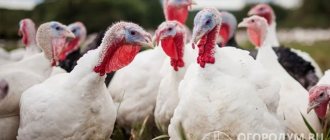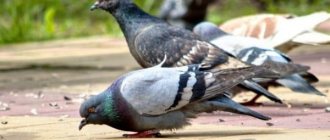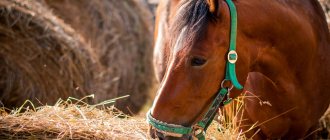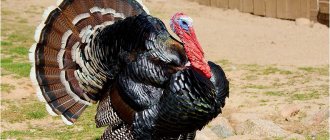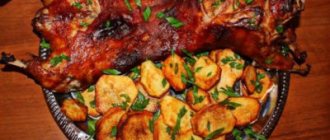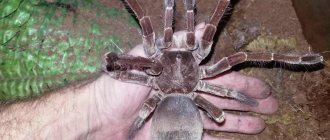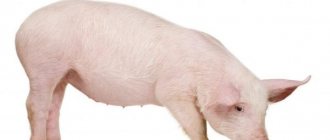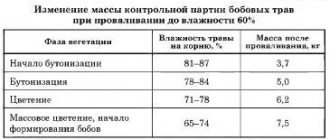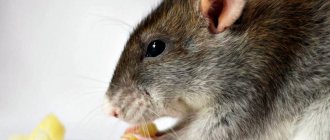Home / Eco life / Village life / Farming / Poultry farming / Pheasants
Back
Published: December 25, 2017
Reading time: 14 min
0
1876
Feed for pheasants must contain sufficient quantities of proteins, fats, carbohydrates, mineral salts and vitamins. Complete food for this type of bird must contain at least 42 grams of protein, 0.2 grams of calcium and 4.7 grams of phosphorus.
- Feeding in summer
- Feeding in winter
- Feeding during egg laying period
- Preparing food at home
- Features of feeding in summer
- Features of feeding in winter
- During the egg laying period
- Self-feeding pheasants
- Warning
It is necessary to feed the bird following a regimen of 3 meals a day: starting from the age of 14 to 60 days, they are fed as many as seven times a day, but then gradually the number of meals is reduced, thereby leaving only the 3 most necessary ones.
If you decide to feed your pheasant with homemade food, you must understand that it is IMPORTANT to take into account the time of year.
Let us consider in detail the standards of substances that a pheasant should receive with food in the summer and winter seasons, as well as the extremely important period of laying eggs.
Feeding in summer
Let's look at the required daily dosages for pheasants in the warm summer months in the table below.
| Type of feed | Ingredients | Norm in grams |
| Concentrated | Corn, wheat, millet | 45 |
| Juicy | Carrots, potatoes, cabbage | 20 |
| Animals | Minced meat, cottage cheese, fish and bone meal | 9 |
| Vitamin | Yeast, fish oil | 2 |
| Mineral | Lime, salt | 3 |
Thus, we see that the daily requirement for an adult bird in summer is about 80 grams.
What do pheasants feed?
If you are planning to start raising and breeding these birds, you should know how pheasants feed. Feeding pheasant chicks differs from feeding adults. Caring for a small chick is not too difficult, the main thing is to follow the basic rules and choose the right diet for it.
Babies need to be fed from the very first day, and before the first feeding, be sure to give them a small amount of warm boiled water. In the first two weeks, baby pheasants eat very often, so you need to provide them with meals every two hours. The chick eats finely chopped greens mixed with a hard-boiled egg. In the future, it is allowed to add small mealworms.
At first, the water is replaced with yogurt to provide the baby with the necessary elements. Keep in mind that the chicks don’t know how to eat yet, so you’ll have to teach them. To do this, pour food into a container and tap it with your finger, and so that the pheasants learn to drink, their beaks are carefully lowered into a bowl of water. After weeks, begin to accustom the chicks to chicken feed.
Up to one month, the chick calmly eats non-acidic cottage cheese, small insects and chopped vegetables. Do not forget about the importance of fresh grass, which should make up at least 30% of the total feed. Since babies grow quickly, once they reach the age of one month, it is necessary to begin accustoming them to the diet of adults. The chicks begin to be fed a more varied diet, which now includes grains and animal feed. Grain mixtures should contain peas, corn, oatmeal, millet - your pet will eat all these necessary components with pleasure.
Feeding in winter
In the cold season, pheasants need to receive about 80 grams of feed per day per adult.
| Type of feed | Ingredients | Norm in grams |
| Concentrated | Corn, wheat, millet | 50 |
| Juicy | Carrots, potatoes, cabbage | 10 |
| Animals | Minced meat, cottage cheese, fish and bone meal | 6 |
| Vitamin | Yeast, fish oil | 3 |
| Mineral | Lime, salt | 3 |
Selling products
In order to get maximum profit from this poultry industry, it is necessary to use the following marketing methods:
- Sale of eggs. In a year, females are capable of laying many more eggs than would be required for breeding. On average, the price for a dozen fluctuates between 550-600 rubles. Pheasant eggs are especially popular among people with allergic reactions.
- Sales of day old chicks. This will allow you to fully recoup the cost of purchasing equipment for incubation within a month.
- Sale of adults. Grown-up pheasants are purchased by both the owners of various zoos and subsidiary farms. Each bird costs about 700 rubles.
- Sales of meat products. The meat of these birds is considered to be a delicacy, so it is in great demand among gourmets. Today, a kilogram of this valuable product will cost about 800 rubles.
You can make money quickly by selling chicks
Feeding during egg laying period
| Ingredient | Norm in grams |
| Corn | 40 |
| Wheat bran | 9 |
| Sunflower cake | 15 |
| Wheat | 20 |
| Bone meal | 5 |
| Fish meal | 10 |
| Fish fat | 1 |
In addition to the above ingredients, the following are added to the feed mixture: 4 g of fungi, namely yeast, 2 g of vegetable oil, preferably sunflower, 7 g of green bluegrass leaves, 23 g of biomycin, 2 g of lime or chalk, 0.3 g of table salt and vitamins (in per 100 grams).
Posted by Danny (@bloody666muse) Dec 16, 2022 at 5:33 PST
Useful tips
Beginning farmers need to know some of the intricacies of bird breeding.
- 1. To build a poultry house or aviary, choose a dry place, protected from drafts.
- 2. There is no need to clutter the area with unnecessary objects, the birds will become cramped and their feathers will break off.
- 3. The enclosure needs to be cleaned and the bedding changed in a timely manner.
- 4. Feeders are emptied of food debris and the water is constantly changed.
- 5. Males can only be kept together until they are one year old. Adult birds will fight for territory and the female may injure each other.
- 6. Beginning breeders are recommended to have one pair and try to observe the behavior in order to organize comfortable conditions.
- 7. Birds need to remove broken feathers. It needs to be carefully pulled out. the procedure is painless for the pheasant. a new healthy feather will grow in place.
- 8. If the bird has become lethargic and looks sick, move it away from the others so as not to infect the entire poultry house and contact a veterinarian.
- 9. You should buy eggs and chicks for breeding only from trusted farms with a good reputation.
Breeding pheasants for the sale of meat, eggs or young chicks is a profitable business that does not require special knowledge or large financial costs. The products are quite expensive and all maintenance costs quickly pay off.
Preparing food at home
Some farmers specially prepare compound feed to feed their poultry, which includes:
- 29% cracked corn;
- 11.7% crushed wheat;
- 10% wheat bran;
- 20% crushed soybeans;
- 2% alfalfa flour;
- 11% fishmeal;
- 10% meat flour;
- 5% comes from vitamins and minerals.
This composition turns out to be enriched and balanced. It will be perfect for your pet birds.
A little history
The first pheasant farms appeared in our country in the 19th century. They brought good profits, since pheasants were not cheap, and only wealthy people could enjoy them. In addition, this wild bird was bred for royal hunting and decoration of palace gardens. In nature, the pheasant bird can be found in the North Caucasus and on the western shore of the Caspian Sea. According to rough estimates, 10-15 thousand individuals live in central Russia. Their numbers can be compared to one farm in Europe.
For beginning farmers, pheasant farming as a business opens up broad development prospects. Baked pheasant can be found on the menu of almost every elite restaurant. Recently, pheasant hunting has become very popular. Hunting farms that organize such entertainment for corporate clients buy live birds at a decent price.
Features of feeding in summer
In the summer, root vegetables should predominate in the diet of pheasants: beets, turnips, rutabaga, carrots, which are either grated or cut into large pieces.
Pheasants and cabbage bite well. They love pears, apples, and berries. Among the greens, it is necessary to give nettle, since it is not only a high-vitamin food, but also a medicinal plant.
Mineral food is also very important for pheasants, so they are provided with crushed shells, chalk, charcoal, and dried and crushed eggshells. They also produce burnt bones, coarse sand and gravel with a diameter of up to 7 mm. All this should be in separate feeders.
Behavior
Outside the breeding season, pheasants stay in single-sex groups or small flocks. Mating begins in early spring with increasing daylight hours. During the mating period, the male protects his nesting area from rivals. In some species, females also fight for nesting territory.
Many species of pheasants are monogamous, some are polygamous. Often pairs remain only for the period of oviposition, much less often for the entire breeding period (until the chicks hatch). For example, peacock pheasants are strictly monogamous and do not get along with other pheasants and chicken-like animals. They are kept in pairs, otherwise fights to the death between males occur. They live quite peacefully with other species of birds: geese, ducks, pigeons. The hunting pheasant is polygamous in nature (2–3 females), but if there is a predominance of males in the population, it remains with one female.
Features of feeding in winter
With the onset of cold weather, the bird needs to eat up to 70 grams of feed daily and an additional 10 grams of juicy additives: for this you can take grated raw carrots or cabbage. An additional 12 grams is recommended by mixing in animal feed and vitamins. Animal nutrition is presented in the form of cottage cheese, minced meat, fish and bone meal. In no case should vitamins be excluded, because birds kept in captivity cannot independently obtain them in the required quantities. As a rule, Omega 3 or fish oil is used for this, which is added in an amount of 2 g, and ascorbic acid (4–5 g). From them, birds receive vitamins B12 and B6, as well as vitamin C, which leads to strengthening the birds’ immunity. To normalize digestion, substances such as amylase and lipase are used.
Posted by Olga (@agneshca56) Dec 22, 2022 at 12:00 PST
Reproduction and microclimate
Male pheasants begin mating with the onset of spring in March–April. The female begins to lay eggs 14–20 days after the start of mating. A few days after mating, the female pheasant builds a nest. It is usually located under a bush or tuft of grass; some species (horned and glossy pheasants) use old nests of other birds in bushes and trees. Shrubs are preferable not only for nesting, but also for feeding and roosting. The nest is covered with dry stems, plant leaves, feathers and down.
A spacious enclosure is required for breeding. In families, there are 2–3 females per 1 male; with a larger number, the percentage of fertilized eggs and egg production decreases. Depending on the breed, they are planted in pairs or families. The male is placed with the female in February-March. Breeding period April–August.
Age for mating: females 8–18 months, males 1–2.5 years. After 2–3 years of age, birds do not mate. A month before mating, antibiotics are introduced into the diet of females to improve egg production and increase the number of fertilized eggs.
Shrubs are planted in the enclosures, in which the female can lay eggs. If there are no bushes, small huts are erected from stems of reeds, reeds, cereals or corn tops tied together. They dig a shallow hole under a bush or hut and cover it with dry stems, leaves, twigs, feathers, fluff, and moss. For horned and peacock pheasants, baskets made of vines and willow twigs are fixed to trees or nailed to walls. Females are very shy and excitable during the nesting period. During the breeding season, males fight to the death.
Pheasants are kept in separate enclosures from February to August, then transferred to a common enclosure. Pheasants are very sensitive to cold. In a warm poultry house, they consume less feed and grow faster; heat does not escape into the surrounding space.
| Age, days | Temperature, °C | Humidity, % | Daylight hours, hours |
| 1–7 | 35–33 | 60–70 | 12 |
| 8–14 | 32–28 | 60–70 | 10–12 |
| 15–21 | 27–23 | 60–70 | 10–12 |
| 22–35 | 22–18 | 60–70 | 14 |
Self-feeding pheasants
When pheasants are kept in pens outside, they can obtain part of the food, as in their natural habitat. They happily feast on the greenery of the plants in the enclosure. Moreover, they peck insects and their larvae that enter the territory. This feeding feature can play into the owners’ hands when using pheasants to control pests in the garden. Pheasants can also peck even small rodents: voles, mice.
Breeding and rearing
Raising pheasants for meat at home is quite an expensive business.
Despite the fact that birds are unpretentious in nutrition and are not very demanding in terms of living conditions, in order to make a profit you will have to invest in arranging a poultry house. Pheasant breeding has its own characteristics that every farmer should know, for example, their cowardice.
Sensing the slightest danger or hearing a sharp sound, the birds will immediately take off and try to hide from the owner.
If you breed them in the countryside in the open air, it will cause a lot of trouble. Because it is necessary to protect the livestock from loud sounds and equip a special enclosure for adult pheasants.
Pheasants can be raised both in small households and on large poultry farms. The main goal of keeping them is to obtain tasty meat and dietary eggs. Pheasant meat and eggs are in great demand in the market. The livestock can also be used for further resale or sold to zoological and hunting farms.
The most popular breeds for breeding are:
- Diamond pheasant. The breed first appeared in China. Mainly bred for decorative purposes. Individuals of this species do not tolerate cold weather, so they are grown only in warm regions;
- Silver. It is the best breed for breeding at home. The birds tolerate frost well and have high egg production rates (about 50 eggs per season). The silver pheasant is a meat breed, as it quickly gains weight. The average weight of one individual is 5 kg;
- Gold. This is one of the most popular decorative breeds. Due to their small weight (up to 1 kg), birds are not raised on an industrial scale. Egg production rates are also low. In one season, females produce no more than 25 eggs;
- Steppe hunter. One of the best egg-laying breeds. Birds feel good in temperate climates, have strong immunity and are unpretentious in their diet. The breed is bred to produce tasty meat.
Warning
In conclusion, I would like to remind you that healthy pheasants should have a thin layer of subcutaneous fat - it protects the bird from cooling and helps it maintain a constant body temperature. Excessive obesity is harmful to the bird's body.
Choose high-quality, fresh ingredients and feed. If you purchase ready-made feed, contact only trusted suppliers. Otherwise, you can cause upset in the bird's gastrointestinal tract, which can even lead to death.
Balanced food and proper nutrition will allow you to raise healthy and beautiful birds.
Sales
There are several implementation options for each breed. The meat of steppe and silver pheasants is sold by selling meat and eggs to restaurants and private customers for large celebrations. Since pheasant meat is still considered an exotic product, restaurants make purchases regularly, but in small quantities. In addition, some establishments prefer to save money and buy frozen meat imported from abroad. For this reason, you should not limit yourself to only meat supplies. You should use all possible sales methods to generate more income.
When breeding steppe pheasants, you can enter into an agreement with hunting farms to supply them with birds. Hunting is an expensive pastime that is popular among wealthy people. To conduct one such event, hunting farms purchase at least 100 birds, which guarantees a one-time profit that is much higher than the one-time supplies to restaurants discussed above. Without developing this area, it will not be possible to expand the business.
Additionally, you can cooperate with other farms to sell young animals for breeding. Private zoos and mansion owners who want to decorate the landscape of their local area are interested in purchasing ornamental birds, such as diamond and golden pheasants. This direction can be added when the pheasant farm grows. At the initial stage, it is difficult to obtain significant income in this area.
Site selection
A pheasant farm cannot be located in any place you like. The territory must meet certain requirements:
- The site must have a slope not exceeding 30°, allowing for the drainage of melt and rainwater.
- The slope of the site should be facing south, which will allow the enclosures to be illuminated throughout the day.
- To ensure uniform illumination of enclosures, it is necessary to remove vegetation that can shade them - trees and shrubs. It is permissible to locate isolated trees that do not provide dense shade.
- If it is necessary to protect the enclosures from the winds, tree and shrub vegetation must be planted around the perimeter of the farm so that it does not cast a shadow on the enclosures.
- The soil on the territory of the pheasant farm should easily pass and drain water, ideally it should be sandy or sandy loam. If the soils are heavy, a drainage system should be installed in them to collect and drain water towards the lower side of the site.
Do you have a site for a pheasant farm?
YesNo
Acquisition
Although pheasant breeding is not widespread, there are still farms in Russia that specialize in this. They are located in Tula, Vologda, Serpukhov, Saratov, Belgorod, Rostov-on-Don, Samara. In the eastern regions of Russia there is the possibility of purchasing in Novosibirsk, Omsk, Sayanogorsk, Komsomolsk-on-Amur.
What is better to buy
Experienced poultry farmers advise choosing young birds when purchasing. This will give a greater chance that the offspring will grow up healthy. Birds over 2.5 years old do not need to be taken. The productivity of such birds is already running out.
Where to buy, price
You need to buy pheasants from breeders, nurseries or from a neighboring farmer. It is important to source birds from different sellers to avoid inbreeding. After all, this can weaken the birds’ immunity or even lead to infertility.
For starters, it’s good to buy 2 – 4 pairs of birds. In this way, you can practice feeding and caring skills. After the farm strengthens its position, the number of birds will increase.
Monitoring prices for pheasant in Russia presents the following indicators:
| Age | Price |
| Up to 3 months | 200 – 400 rub. |
| Up to 6 months | 500 rub. |
| 9 months | Up to 800 rub. |
| 1 year | From 550 rub. |
| 2 years | On average 850 rubles. |
| Egg | 75 – 120 rub./pcs. |
How to choose healthy chicks
When purchasing, you need to pay attention to a number of characteristics:
- dry beak, without thickening or spots (evidence of a healthy bird);
- compliance with breed data (if the color of a pheasant does not meet the standard, it is a hybrid that is not subject to further breeding);
- clean feathers around the cloaca;
- fleshy chest (without excess fat and protruding bones).

